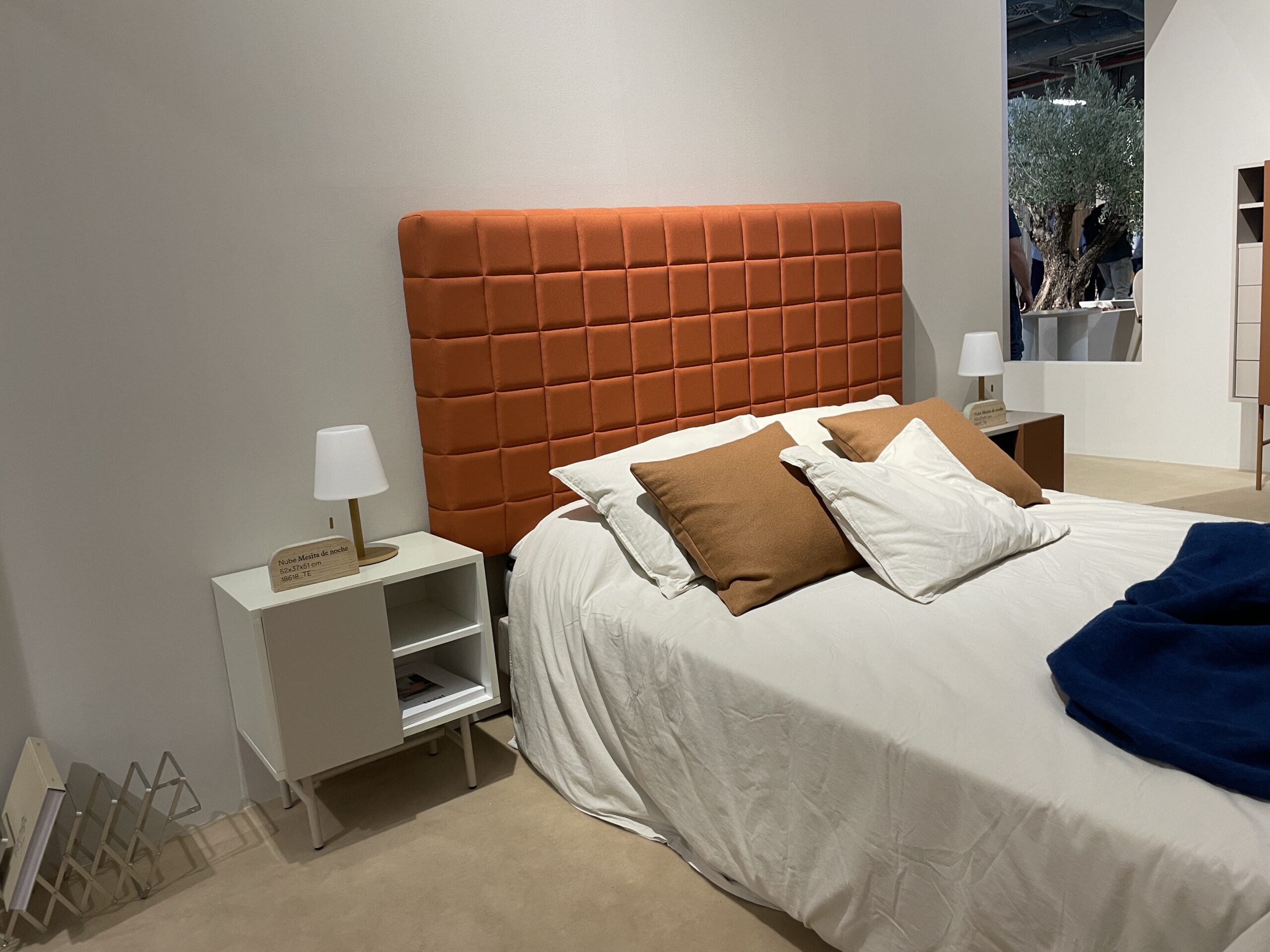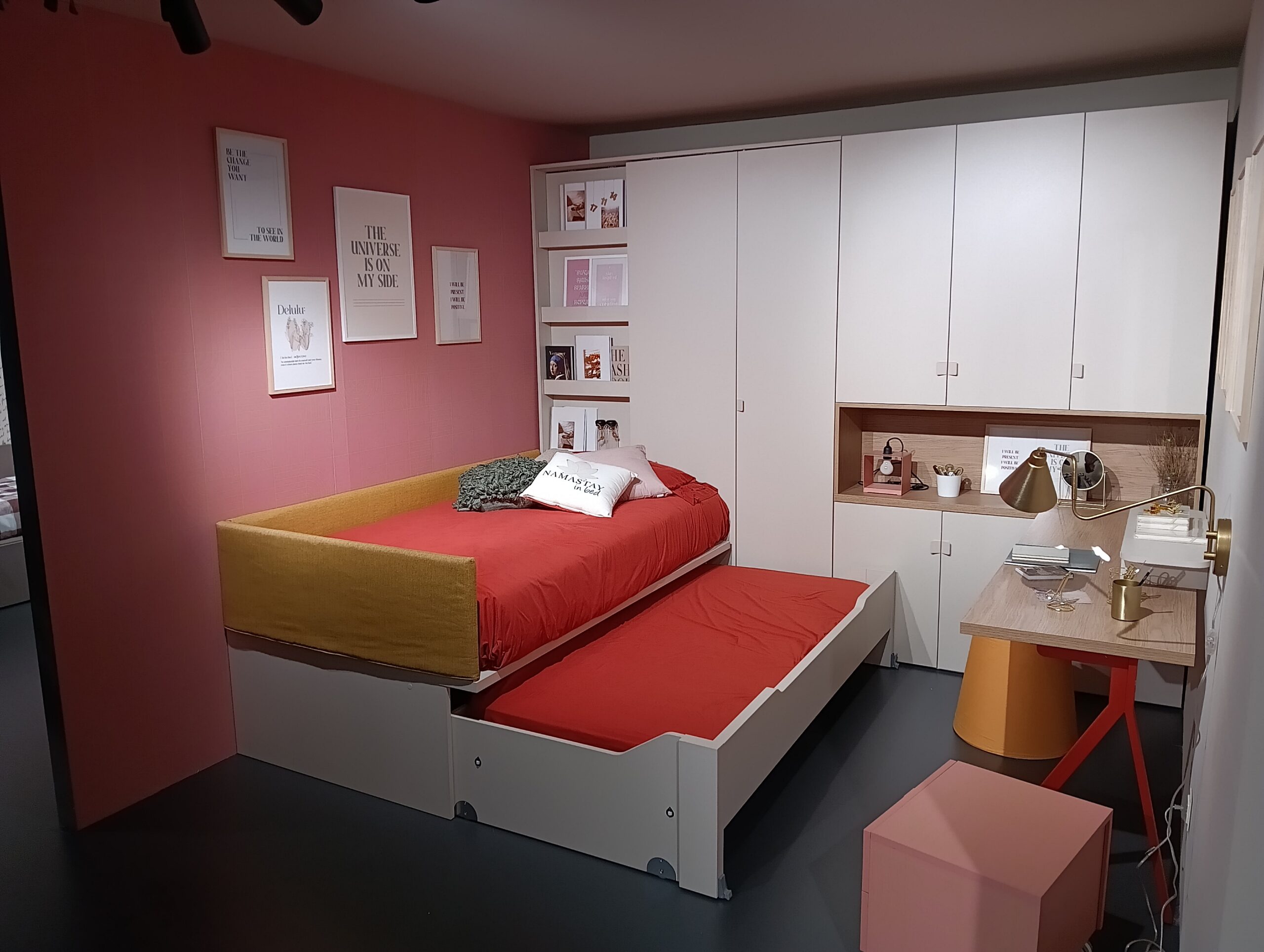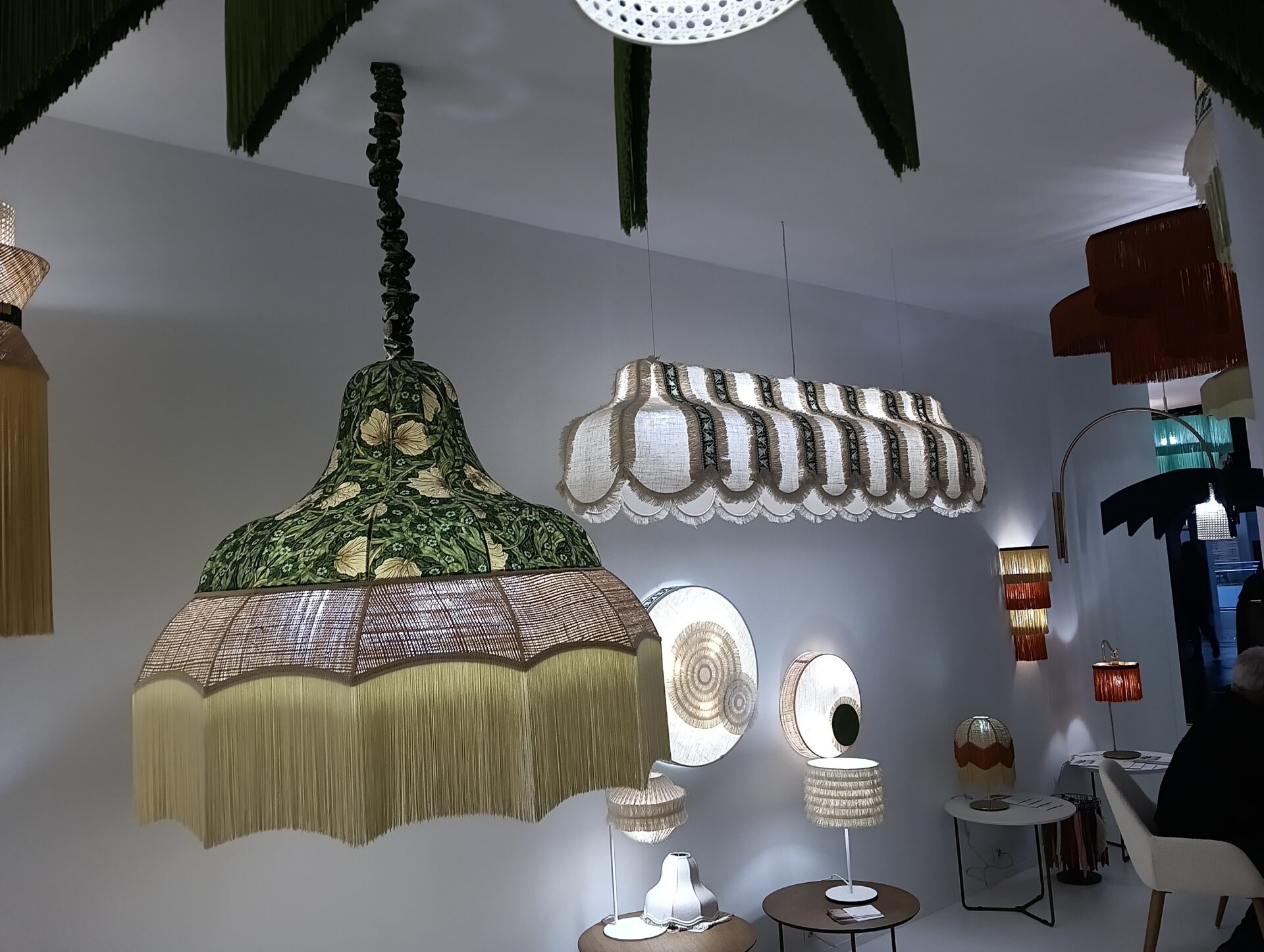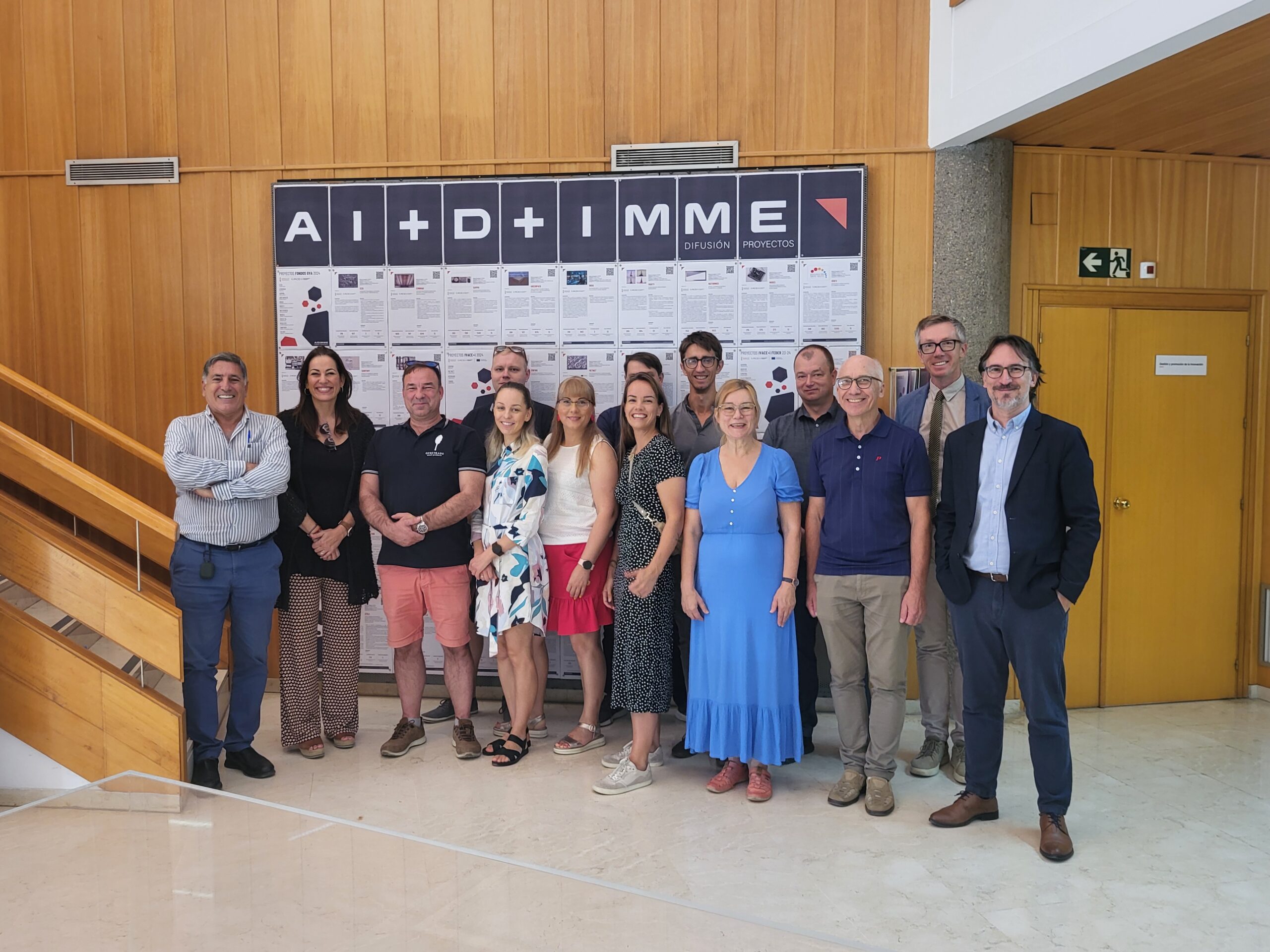On a trip organized by the Võrumaa Development Center, wood and furniture entrepreneurs from Southeast Estonia and TSENTER employees visited the Feria Hábitat 2024 furniture fair in Valencia, Spain, in early October.
Feria Habiat is one of the largest joint fairs for interior design, home textiles, kitchen furniture, and appliances in recent years. The two-floor exhibition covered an area of 96,000 square meters, where 925 companies and brands showcased their products. Among them, 20% of the exhibitors were from 16 countries outside of Spain.
There was a lot of natural wood and veneer on display at the exhibition, with cabinets featuring embossed fronts and joints made at a 45-degree angle. Marquetry technique was also used on larger surfaces. The furniture colors were earthy, ranging from browns and beiges to pastel greens and grays.
Terracotta emerged as a new trend color, found in almost every exhibition booth, from wall paint to smaller decor elements. Gold was widely used, combined with natural and painted wood, as well as in lighting fixtures.

compared to 2022. Compared to last year’s exhibition, the quality of finishes and constructions seemed to have improved – only a few cabinets had noticeable issues, such as a crooked door or a drawer that was too difficult to open.
The children’s furniture was compact, featuring many corner cabinets and built-in wall solutions with shelves and multifunctional ‘cabinet-to-desk’ systems. The beds were designed to save space, either hidden in cabinets or stacked in drawer systems, and there were also simple bunk beds available. The main material for children’s furniture was painted MDF, with brighter colors used to create contrasts.

Cabinets, as well as sofas and beds, featured metal legs, and the sofas had a modern, square shape. The sofas in the aforementioned colors stood out, but there was also upholstered furniture covered in leather and simple linen fabric, as well as classic white. Surprisingly, many of the sofas had an unusually soft seating area for us.
In the bedroom furniture displays, we also noticed several vanity tables, nicely equipped with mirrors, but when sitting in front of them, the face was positioned higher than the mirror.
The lighting section of the exhibition was quite modest, but there were consistent influences from the 1970s. The lamp shades were made of rattan, woven ribbons, and featured plenty of fringes. The lamp bases were predominantly made of metal, wood, or even ceramic, which made them stand out as elegant decor elements. The floor lamps had an issue with stability – most of them were unsteady or tilted.

The kitchens were predominantly minimalist, featuring matte and smooth surfaces without moldings or handles. Artificial stone with a marble imitation remains popular for countertops, combined with an under-counter cooktop and an integrated range hood.
In addition to the exhibition, we visited the AIDIMME Technology Institute in Valencia, where they test and certify various materials and furniture. The institute, which has two headquarters, employs around 170 people. Fifty percent of its funding comes from various projects, while the other half comes from service work. The institute has both chemical laboratories and the capability to test furniture and materials, and they collaborate with paint and hardware manufacturers. At the Technology Institute, we also met with the head of the Valencia Wood and Furniture Companies Association. The union has 2,000 members, 90% of whom are small businesses.

We were welcomed by the local Chamber of Commerce and Industry Cámara, where we shared experiences about supporting small businesses. It turned out that regardless of the market size and location, we struggle with similar problems. The chamber has created a common brand, ‘Furniture from Spain,’ for companies in the Valencia region. This initiative aims to gain greater visibility and attention through joint marketing and an action plan.


